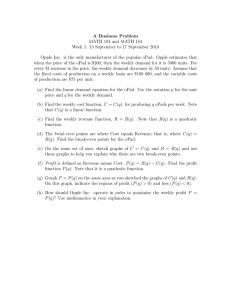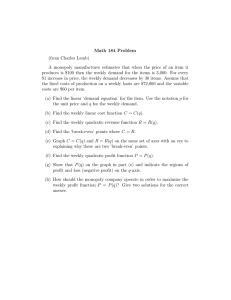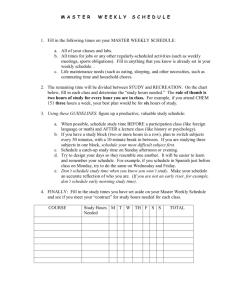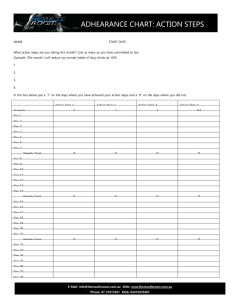A First Business Problem MATH 104 and MATH 184 September 14, 2015
advertisement
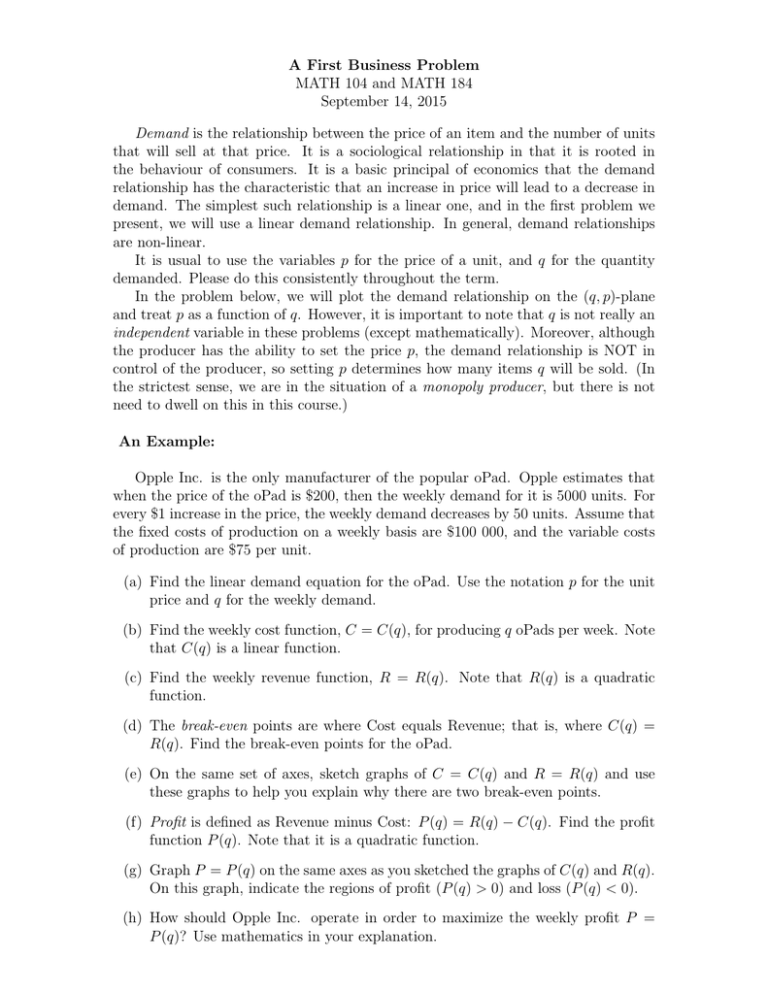
A First Business Problem MATH 104 and MATH 184 September 14, 2015 Demand is the relationship between the price of an item and the number of units that will sell at that price. It is a sociological relationship in that it is rooted in the behaviour of consumers. It is a basic principal of economics that the demand relationship has the characteristic that an increase in price will lead to a decrease in demand. The simplest such relationship is a linear one, and in the first problem we present, we will use a linear demand relationship. In general, demand relationships are non-linear. It is usual to use the variables p for the price of a unit, and q for the quantity demanded. Please do this consistently throughout the term. In the problem below, we will plot the demand relationship on the (q, p)-plane and treat p as a function of q. However, it is important to note that q is not really an independent variable in these problems (except mathematically). Moreover, although the producer has the ability to set the price p, the demand relationship is NOT in control of the producer, so setting p determines how many items q will be sold. (In the strictest sense, we are in the situation of a monopoly producer, but there is not need to dwell on this in this course.) An Example: Opple Inc. is the only manufacturer of the popular oPad. Opple estimates that when the price of the oPad is $200, then the weekly demand for it is 5000 units. For every $1 increase in the price, the weekly demand decreases by 50 units. Assume that the fixed costs of production on a weekly basis are $100 000, and the variable costs of production are $75 per unit. (a) Find the linear demand equation for the oPad. Use the notation p for the unit price and q for the weekly demand. (b) Find the weekly cost function, C = C(q), for producing q oPads per week. Note that C(q) is a linear function. (c) Find the weekly revenue function, R = R(q). Note that R(q) is a quadratic function. (d) The break-even points are where Cost equals Revenue; that is, where C(q) = R(q). Find the break-even points for the oPad. (e) On the same set of axes, sketch graphs of C = C(q) and R = R(q) and use these graphs to help you explain why there are two break-even points. (f) Profit is defined as Revenue minus Cost: P (q) = R(q) − C(q). Find the profit function P (q). Note that it is a quadratic function. (g) Graph P = P (q) on the same axes as you sketched the graphs of C(q) and R(q). On this graph, indicate the regions of profit (P (q) > 0) and loss (P (q) < 0). (h) How should Opple Inc. operate in order to maximize the weekly profit P = P (q)? Use mathematics in your explanation.
